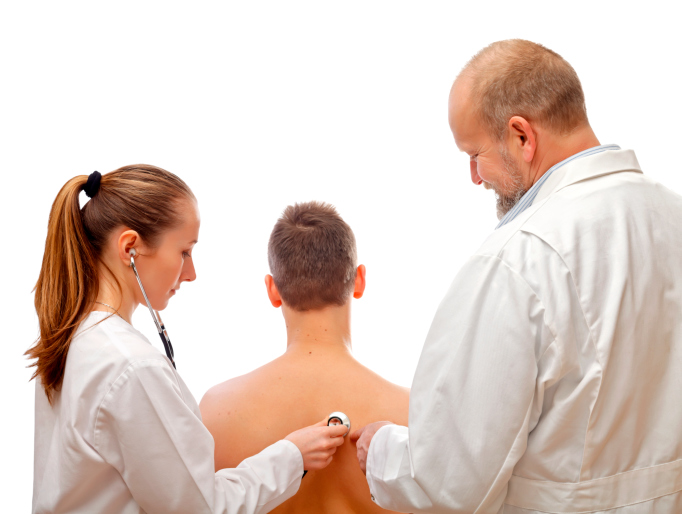
The use of SPs (standardized or simulated patients) in medical education for the teaching and assessment of clinical skills has enormously expanded the opportunities for medical students and residents to develop and practice their skills in challenging and high-risk clinical situations without any risk to patients.
While many use these two terms interchangeably, most medical educators define a simulated patient as an individual who is trained to act as a real patient in order to simulate a set of symptoms or problems. In contrast, standardized patients are more highly trained to produce a scripted clinical scenario in a standardized fashion with as little variability as possible.
SPs are widely used in the areas of taking a sexual history from or delivering bad news to patients. The New York Times even covered a program where our faculty uses SPs to teach residents in internal medicine to deliver bad news to a woman with an abnormal mammogram.
Watch the New York Times video about how Einstein faculty members use SPs at Montefiore Medical Center.
There are limitations to both SPs and simulation technology. SPs are usually healthy people without the abnormal physical findings of the patients they might need to portray; simulators, while realistic in many ways, cannot produce the same stressors experienced when doctors perform those same procedures on real patients.
Hybrid simulation solves both those problems. It combines the realism of a live patient and the physical components that the SPs don’t have. For example, there are models (called task trainers) of a pelvis including a plastic neonate coming through the birth canal. If this task trainer is placed between the legs of an SP and the interface covered by a bedsheet, the learner can practice the steps of vaginal delivery with all the realism of the yelling and grunting mother in pain.
It is amazing to watch a student who has put IVs into plastic arms with ease become suddenly unnerved and uneasy when the real person sitting next to the plastic arm (with the interface covered by a sheet) starts to question the student’s experience level and how much this will hurt. The previously confident student becomes sweaty with shaking hands, a situation he or she might very well encounter with a real patient. Through practice the student can now be prepared to manage his or her reaction and maintain a steady hand.
Another hybrid is the use of stethoscopes with digital boxes (Ventriloscopes) installed in the tubing going to the ears, which can receive transmission of sounds from a remote device. While the student is examining the SP, he or she will hear not the normal sounds of that SP but the abnormal lung, heart and abdominal sounds transmitted digitally into the student’s earpiece. This allows a normal, healthy SP to convincingly play a patient with severe asthma, wheezes and all.
Expensive, computerized mannequins can simulate rapidly varying blood pressure, pulse and sweating, and can even blink, but there is no substitute for the realism of the human experience.
Combining real people (SPs) with simulation technology is the next step forward in medical education for providing our students with safe and effective learning at absolutely no risk to patients.
Learn More About Getting Into and Surviving Med School


Comments on this entry are closed.
I absolutely agree with the statement that, “there is no substitute for the realism of the human experience.”